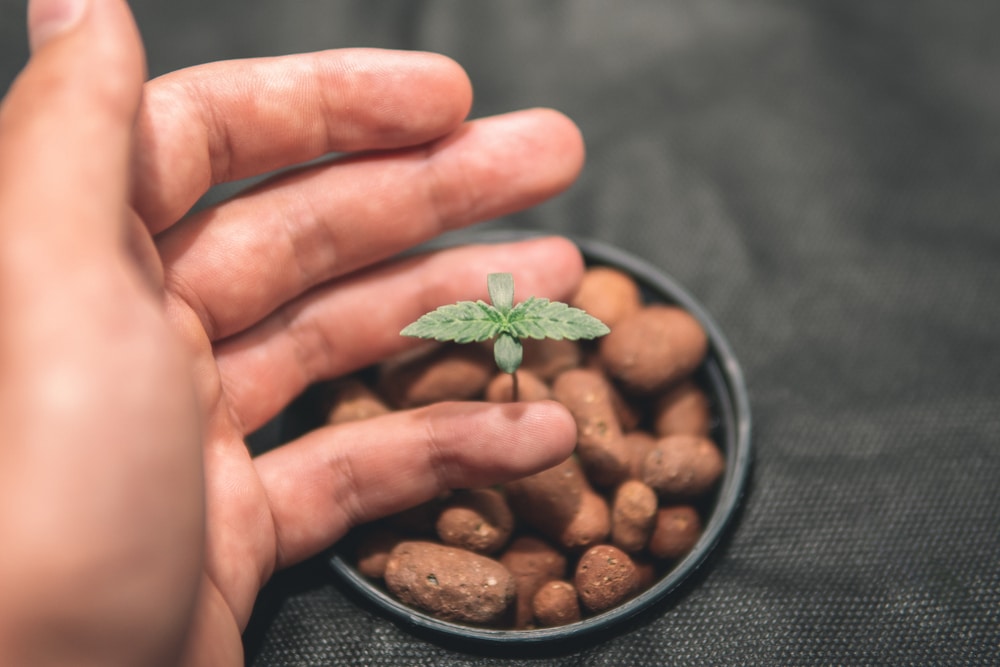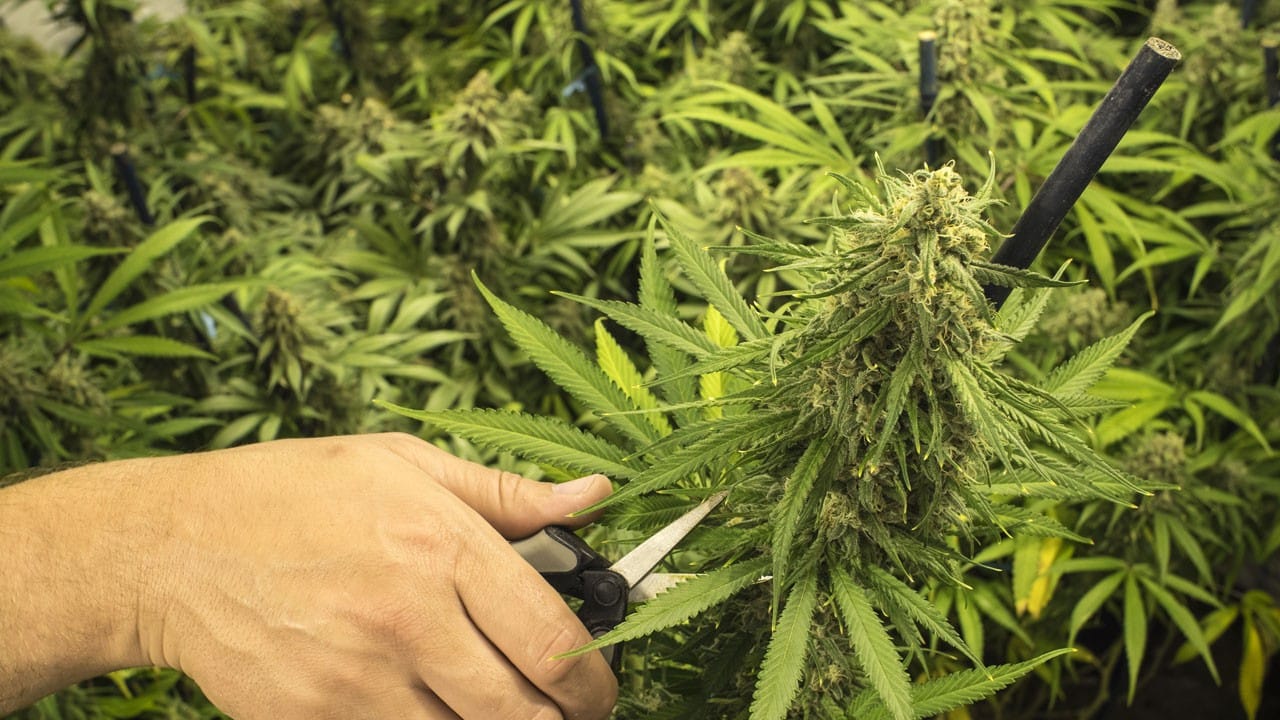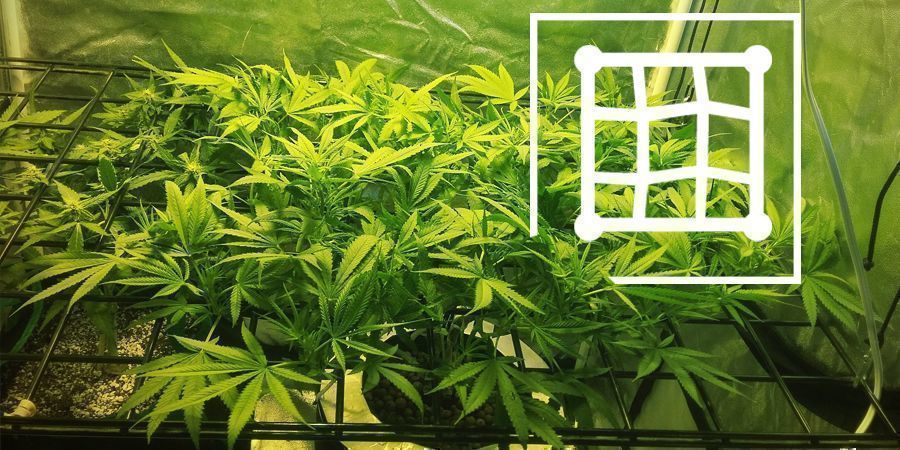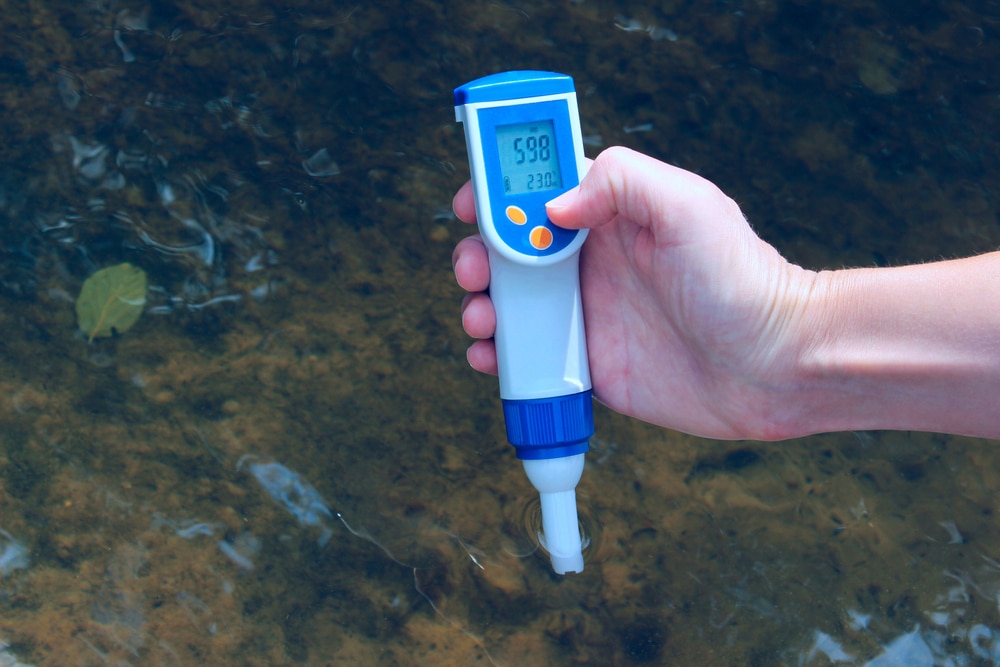No products in the cart.
Marijuana Education
The Complete Guide to Watering Cannabis Seedlings: Tips and Techniques
Watering cannabis seedlings correctly is a crucial aspect of cultivation. Young plants require precise management to ensure survival and healthy growth.Are you interested in cultivating marijuana and want to give your crop the perfect start? There are multiple factors to consider when nurturing germinated seeds.
Join us to learn about sensitive cannabis seedlings’ watering requirements and discover the best methods for optimal results.
Let’s dive in!
Understanding cannabis seedlings’ water requirements
For the best possible outcome with your cannabis crop, understanding a seedling’s water requirements is crucial. Since this growth stage lays the foundation for the plant’s cycle, it’s best to ensure that you check all the boxes
Seedling stage: A crucial phase in cannabis growth
A cannabis seedling emerges from its medium as a single short stem with small, vibrant green cotyledon leaves. This initial foliage supplies the nutrition necessary for a root system and photosynthetic vegetation to develop.
The seedling stage is vital to the cultivation process. When seeds germinate, the sprouts require attention and gentle management to become healthy vegetating plants.
Water retention and oxygen: Striking the right balance
Balance is crucial when nurturing and watering cannabis seedlings. Young plants need oxygen and moisture, but the wrong amount can harm vegetation.
Ensure your seedlings have water and proper ventilation, and inspect them frequently. Don’t let your medium dry out, but avoid excessive moisture to prevent issues like mold.
A seedling’s oxygen exposure requires similar considerations as water retention. While spouts need air, their environment shouldn’t be too damp, and wind can damage them.
Factors affecting water frequency and quantity
Multiple factors dictate the required frequency and quantity when watering cannabis seedlings. Understanding these determining aspects is vital for developing a healthy plant:
A developing seedling’s size signifies the regularity and amount of water it needs. As a young plant nears the vegetation stage, its requirements increase.
The rate of water consumption reflects a seedling’s needs. If your medium is drying out quickly, it typically means the sprout is thirsty.
Absorption rates provide an excellent way to determine frequency and quantity when watering cannabis seedlings or fully developing plants.
The heat in your grow area often dictates the factors affecting feeding requirements. Ideal temperatures for seedlings are usually between 70-80°F.
Preparing the growing medium for cannabis seedlings
Optimizing conditions for cannabis seedlings promotes healthy development during the vegging and flowering periods. The starting point is preparing your chosen medium and using the best methods.
Choosing the right methods
The most common mediums for germinating or housing seedlings are light potting soil and rockwool cubes. Both methods are excellent with proper maintenance.
If you’re using soil, choosing the correct type is essential. It must be light and free of contaminants or excessive nutrients capable of harming sensitive seedlings.
The best soils for sprouts contain moisture-retentive organic matter. They also include porous materials like perlite or vermiculite to assist with drainage when watering cannabis seedlings.
While both methods are excellent, rockwool offers some advantages over using soil. The substrate enables better ventilation and water drainage for the developing root system.
Properly moistening the growing medium
Pre-moistening the growing medium is essential for germination and seedling development. Growth can’t happen without water, but excessive amounts can cause molds and pathogens, affecting the production and quality of cannabis.
Ensure your chosen medium is moderately damp throughout, and maintain this moisture level as the seedling develops.
Monitoring and adjusting the pH level
Acidity management is a crucial aspect of watering cannabis seedlings and general cultivation. pH levels of 5.5–6.5 are usually suitable, but the range can vary depending on multiple factors.
Some mediums work best with higher acidity, and the type of cannabis is another variable. Each strain has unique and specific requirements for optimal production. All commercial cultivars come with detailed information, and maintaining the correct acidity level is crucial.
When you establish the optimal pH for cannabis, check readings frequently and use solution products to adjust accordingly.
Techniques for watering cannabis seedlings
Care is crucial when watering cannabis seedlings and there are multiple techniques to optimize the process.
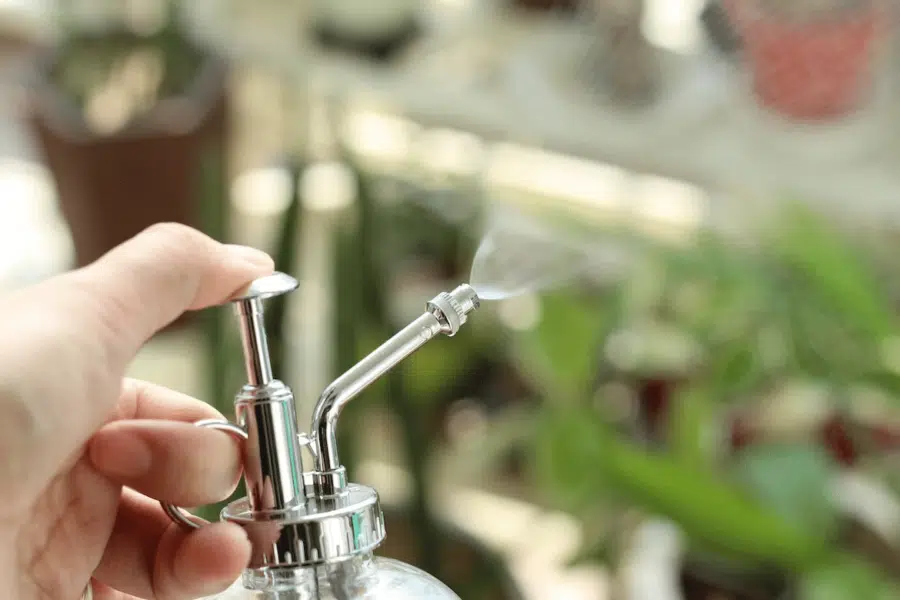
Watering by hand: Tips for precise control
If you’re watering by hand, be cautious. It’s easy to pour in too much, drowning the root system or causing other issues.
Watering with a sprinkler enables control over the process and reduces accidents.
Using a spray bottle for gentle watering
Spray bottles are ideal for watering seedlings as they provide a misty supply that gently moistens your medium.
These devices are inexpensive and provide precise control when maintaining young plants. Most non-commercial indoor growers use spray bottles. They’re ideal for watering cannabis seedlings in solo cups where excessive moisture can cause irreparable problems.
Automated watering systems for consistent moisture
Automatic watering systems can be costly, but they offer precise maintenance for seedlings with minimal effort. These setups provide a continuous water supply to plants. It’s also possible to make DIY home versions that aren’t expensive to assemble.
Many industrial-scale grow operations utilize automated systems to manage mass amounts of seedlings. This method is also ideal for personal growers who spend time away from their setup. Modern devices are even controllable from phone apps.
Signs of overwatering and underwatering cannabis seedlings
An under or overwatered cannabis seedling is likely to encounter problems. Too much moisture can cause fungal and bacterial issues like mold, mildew, or root rot. Allowing sprouts to dry out stunts growth, and plants can’t develop.
Identifying overwatering symptoms
There are various symptoms of overwatering and signs to watch out for, including:
- Drooping cannabis leaves
- Stunted growth
- Yellowing leaves or spots appearing on the vegetation
These symptoms could signify a different issue, but overwatering is likely the cause if you spot them with seedlings.
Recognizing underwatering symptoms
Watering cannabis seedlings infrequently usually presents easy-to-spot signs. Although, some symptoms are the same as those from excessive moisture. Stunted growth and yellowing leaves occur from both errors in feeding.
Symptoms unique to overwatered seedlings include dry or crispy foliage. A lack of moisture is often the cause of curling cannabis leaves.
If you’re cultivating in soil, insert your finger around an inch into the medium. When particles are dry or aren’t sticking, your seedling needs water.
Correcting watering issues to restore seedling health
If you notice any signs of under or overwatered cannabis seedlings, immediate action is necessary.
When the root system is rotting, the chance of a sprout’s survival is slim. There’s hope if the symptoms only extend to slow growth and leaf issues.
If you think the problem is excessive moisture, reduce the humidity in their environment and avoid watering them. This process gives seedlings a chance to bounce back.
Restoring the health of water-deprived young plants requires immediate but gentle action. Ensure the medium receives moisture quickly, but don’t apply too much at once. Recovering a seedling is a gradual process.
Monitoring and adjusting humidity levels for cannabis seedlings
Watering cannabis seedlings isn’t the only aspect of achieving success. The correct relative humidity (RH) also plays a significant role in plant health.
Ideal humidity levels for seedling growth
Ensuring the air isn’t too dry or excessively damp is essential for healthy growth. The ideal humidity level for most cannabis seedlings is between 60–70%. Maintaining this range helps prevent multiple issues like diseases and fungal infections.
Using humidity domes for young seedlings
Some cultivators use humidity domes for young plants. These oval-shaped seedling houses are primarily applicable for germinating seeds but can also protect short sprouts.
Humidity domes trap heat and moisture in an enclosed environment. These conditions increase the success rate of germination and protect against pests and contaminants.
The downside to these devices is the cost and reduction of fresh airflow. The process of removing domes can also make watering cannabis seedlings a nuisance.
Tools and techniques for humidity control
There are various essential supplies for growing cannabis. Countless tools and techniques exist for controlling humidity. These devices help you monitor moisture levels in the air and make adjustments.
Some tools range from inexpensive probes to read temperatures and humidity. There are also automated systems that connect to other devices, like fans. These setups are costly but provide accurate readings and maintain optimal conditions without manual intervention requirements.
Ensuring correct humidity levels is essential when watering cannabis seedlings or mature plants. While the investment in extra machinery isn’t ideal for everyone, the benefits of controlling conditions are worthwhile.
Dehumidifiers are typically the best way to reduce moisture levels in a grow room. These machines suck water from the air and collect it in a containment system.
Humidifier systems provide the opposite service and help increase levels if the environment becomes too dry. If the area only needs a slight moisture boost, misting the air and medium helps restore conditions.
Preventing common watering-related issues
Watering cannabis seedlings incorrectly causes unwanted hassle for cultivators. The best way to deal with growth problems is to learn how to prevent them.
Avoiding root rot and fungal infections
There are various ways to avoid issues and fungal infections. Proper drainage is essential to prevent water from stagnating and attracting bacteria. Ensure you don’t overwater your seedlings, and ensure your medium is clean to avoid contaminants.
Preventing mold and mildew growth
Watering cannabis seedlings is vital, but cultivators should watch out for “damping off” mold and mildew growth. Moisture provides a breathing ground for these issues. Here are simple tips to help prevent these problems:
- Avoid overwatering
- Ensure to sanitize your hands and tools
- Remove domes when seedlings emerge and protrude around two inches above the medium’s surface
- Keep temperatures within appropriate ranges and avoid extremes
- Introduce an oscillating fan to improve airflow in the grow space
Encouraging strong root development for healthy seedlings
Strong roots are crucial for the survival and health of seedlings. The initial growth system develops naturally as sprouts emerge. When the first “true leaves” appear, it’s time to transplant to a new medium with essential minerals.
Introduce phosphorus, potassium, and nitrogen to the medium when watering cannabis seedlings during their transition to the vegetative phase.
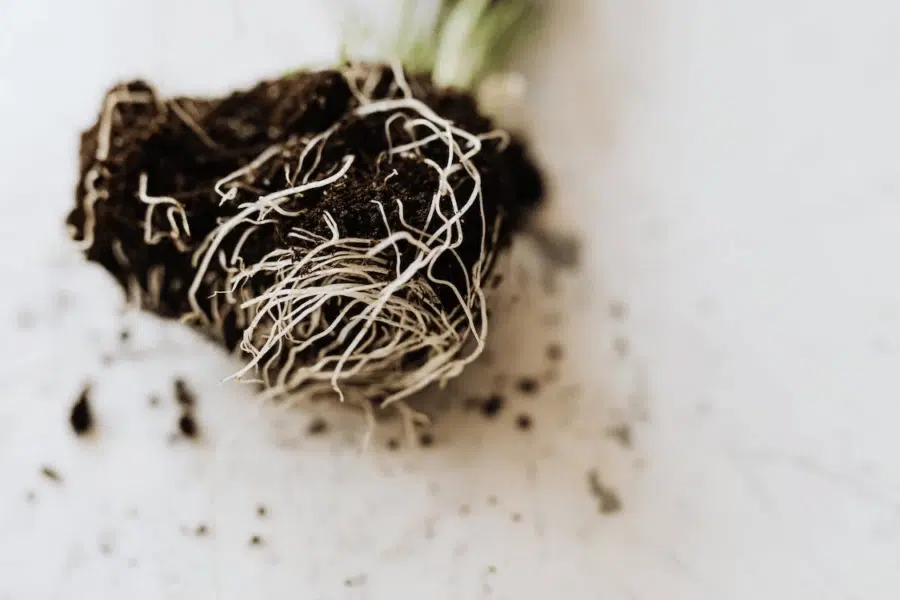
Transitioning cannabis seedlings to the vegetative stage
The development from seedling to the vegetative phase indicates a successful start. If you’re at this stage, you have a fully photosynthetic plant to nurture. Ensuring a smooth transition improves all aspects of growth.
Recognizing signs of seedling maturity
Transitioning at the right time is essential for the developing roots to branch out, allowing vegetation to begin. There are obvious signs of a maturing seedling, indicating it’s ready for the next growth stage.
A sprout is ready when the first “true” fan leaves are visible. This foliage replaces the cotyledons and has the 5–7 finger shape people recognize cannabis for.
When these fan leaves appear, it’s time to move your young plants to a new home with space to expand. If you’re unsure about the foliage, a sudden stop in growth could also mean seedling maturity.
Leaves indicate health status during each growth stage and even signify when to harvest cannabis plants. Inspect foliage frequently during your crop’s life cycle to ensure it’s developing without issues.
Adjusting watering practices for vegetative growth
Watering cannabis seedlings requires attention to detail. The same diligence with appropriate adjustments is essential when vegetative growth begins. As your plant develops, its requirements increase.
Pay close attention to your vegetation and medium. Provide appropriate water relative to the plant’s increasing size and absorption rates.
Monitoring seedling health throughout the transition
Monitor your plant’s health throughout its transition from seedling to the vegetative stage. This moment in a crop’s life cycle influences the final results, like yield and quality.
Inspect the leaves frequently for any signs of discoloration, spots, or a reduction in vibrancy. Foliage provides the best indicator of plant health during this phase. Watch out for signs of stunted growth and maintain your diligence in maintenance.
Correctly watering seedlings for supreme weed
Cultivation is increasingly popular, and people are fine-tuning the process. Mastering the basics of watering cannabis seedlings enables the production of high-quality buds.
Having command over the fundamentals facilitates a further focus on expert aspects of growing marijuana, making perfection achievable.
Are you eager to increase your knowledge about cultivating cannabis? Check out our blog for more illuminating information about the world of weed.



